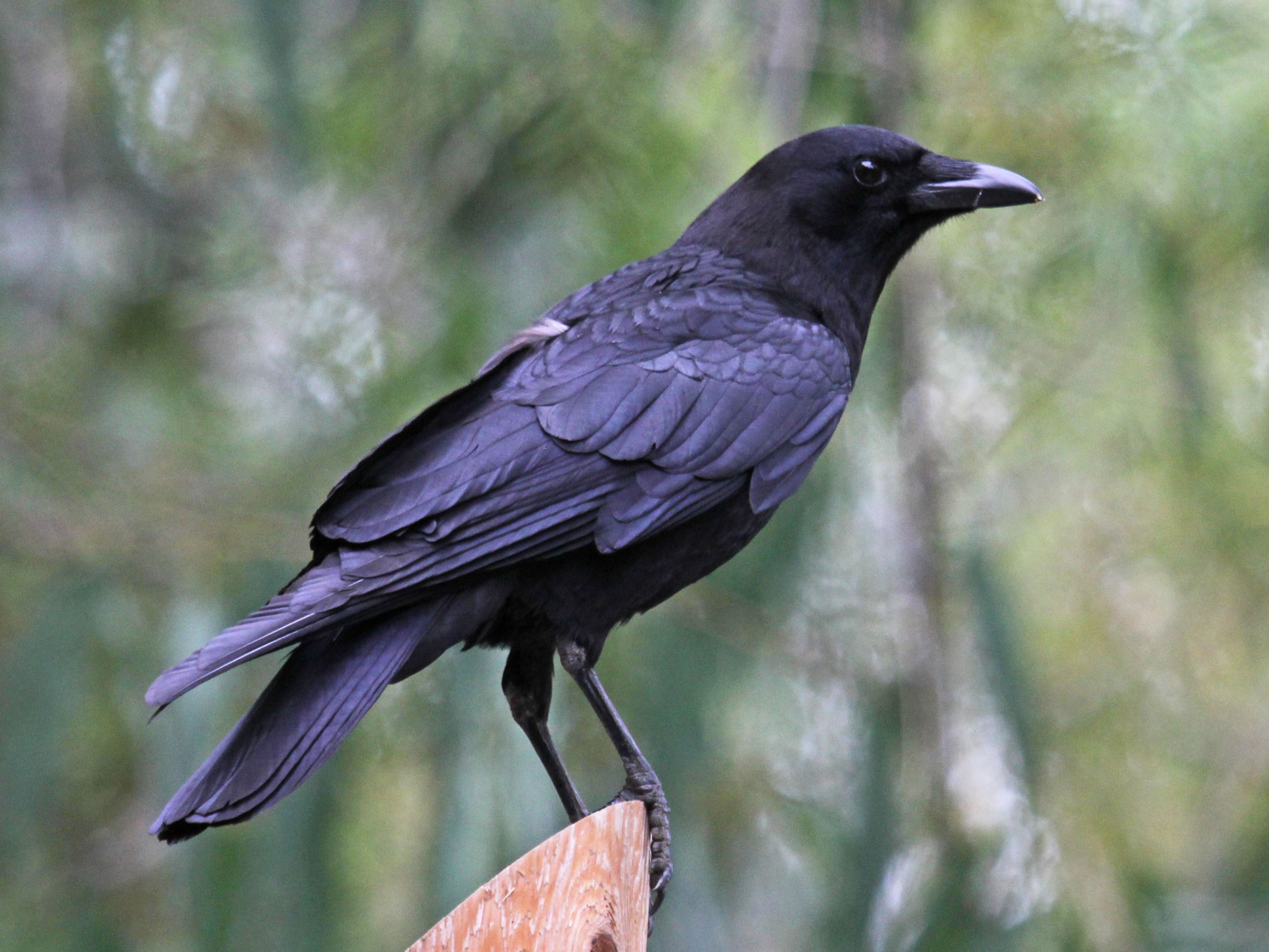 Seen any crows lately? There are about 40 species of crows, found across the world except, curiously, South America. The four species in North America are the American, Northwestern, Fish, and Tamaulipas Crow, and some small populations of the Eurasian Jackdaw. For many hundreds of years crows and ravens have been a substantial part of many cultures around the world. There are a variety of Native American legends that attempt to explain why the crow (or raven) is black. Associated with scavenging the remains of humans who died as a result of wars or plague, a group of crows is called a “murder.”
Seen any crows lately? There are about 40 species of crows, found across the world except, curiously, South America. The four species in North America are the American, Northwestern, Fish, and Tamaulipas Crow, and some small populations of the Eurasian Jackdaw. For many hundreds of years crows and ravens have been a substantial part of many cultures around the world. There are a variety of Native American legends that attempt to explain why the crow (or raven) is black. Associated with scavenging the remains of humans who died as a result of wars or plague, a group of crows is called a “murder.”
Although they are often reviled as pests, studies have demonstrated that crows are very intelligent, perhaps even being the smartest of all birds. They follow humans and other animals around looking for food, drop nuts in roads for cars to crush, and use tools like twigs or wires to extract insects from tree bark. Recent studies indicate that crows can distinguish one human from another by their facial features, like we do.
But are crows becoming more common? In 1972, American Crows were added to the Migratory Bird Act of 1918, protecting them, and allowing their populations to swell. Crows then declined in the early 2000s because of West Nile Virus, as did jays and magpies. Now that they are recovering, they seem more numerous. (Recent estimates put the North American crow population at 31,000,000!) A number of cities have recently reported increases in the urban populations of crows. So they are more common.
Crows are omnivores, and very unfussy ones. A better term, used by ornithologists, is “euryphagous”, meaning they will eat almost anything and thus can live almost anywhere. They are large for a songbird (yes, they are a songbird, but without a song), and their size makes them less vulnerable to predators and the vagaries of the weather. Crows are predators and will eat anything they can overwhelm but most of their diet consists of waste grain, earthworms and other invertebrates. Crows will occasionally eat the eggs and nestlings of songbirds, and are sometimes blamed for their disappearance. The reality is that crows are only one predator on these songbirds; studies have been done, removing crows and looking at the resulting nest success of bird species the crows preyed upon, that illustrate that removal of crows does not increase nest success or survival of the birds to be protected. Other predators fill their niche.
Crows are thriving not only because they are so adaptable and hardy but also because those birds that are less so are not doing as well. Loss of habitat and climate change have had serious deleterious effects on a large number and variety of birds over the past few decades; over 50 species have shown a 45% or more loss in their populations and there has been a 30% decline in the number of birds overall in the last 30 years. Crows are just taking their places.
It seems that crows are indeed similar to humans at least to the extent that their intelligence enables them to occupy diverse niches and expand population in response to the changes that are diminishing other “natural” environments.